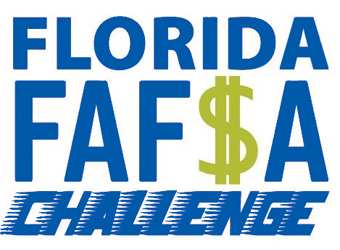 The Florida FAFSA Challenge is a friendly statewide competition to improve FAFSA completion by 5% over the previous year. This year, almost 300 schools in 37 counties have registered for the challenge.
The Florida FAFSA Challenge is a friendly statewide competition to improve FAFSA completion by 5% over the previous year. This year, almost 300 schools in 37 counties have registered for the challenge.
Every school that meets the 5% challenge will receive a certificate recognizing them as a FAFSA Champion. Additionally, FCAN will honor schools and districts based on their achievements in certain categories at the FCAN annual summit. The categories include, among others, overall FAFSA completion rate and most improved completion rate.
This year’s Florida FAFSA challenge will conclude in just a few weeks on March 31. We are excited to report that 51 schools have already achieved the goal of boosting their FAFSA completion rates by 5 percent! Three school districts — Hardee, Madison, and Walton — have also surpassed the goal of increasing FAFSA completion by 5%.
Learning from FAFSA Challenge Champions
To learn more about what strategies successful schools are using to increase their FAFSA completion, FCAN reached out to Quandria Jenkins, who heads up FAFSA completion at Lake Gibson High School in Polk County. Lake Gibson was one of the earliest schools to hit the 5% goal.
Jenkins first entered her position at Lake Gibson in October of the 2016-17 school year. This meant that FAFSA season was already underway when she started, thanks to the earlier Federal Student Aid start date of October 1.
Leveraging Your Network
Originally, Jenkins attempted to organize a FAFSA completion campaign on her own. She quickly realized that she needed the help and cooperation of other faculty members.
Approached by a few teachers, Jenkins assembled a “Dream Team” of 5-7 English and Reading teachers who were committed to helping students file the FAFSA. “I wanted to make a welcoming environment, so I would play jazz music and serve refreshments,” she recalled.
Getting in Front of Students
Through these meetings, Jenkins worked with her team to make sure students with the greatest need had access to funds.
By building good relationships with teachers, Jenkins gained trust and credibility to speak in class about items such as FAFSA, Bright Futures, and college applications. “The teachers are excited to see me,” she explains, “because they know I’m going to share good information with their students.”
Jenkins emphasized that it was important to take the time to build trust with teachers, so they were more willing to share their class time. “Anyone who is in charge of FAFSA needs to find a way to get into the classrooms and talk to the kids,” she explained.
Making FAFSA an Assignment
Having Jenkins present to their students was a good way to build awareness around financial aid. But some of the teachers on her Dream Team wanted to do more to boost FAFSA completion.
The English teachers decided to make FAFSA completion an assignment in their classes. Students had two options: They could show the completed FAFSA confirmation page or for those students who were unable to complete the form, they could do a research assignment on the types of financial aid available to students.
After employing this strategy, Lake Gibson saw their FAFSA completion rate jump by 8 percentage points in a single week. Jenkins observed that making FAFSA completion an assignment also created excitement. Students would come to school sharing how much Pell Grant money they’d been awarded, which helped to pique their peers’ interest.
Gearing Up for Next Year
Jenkins says she will continue to make FAFSA completion an assignment next year, but move it up to the fall to align with other Lake Gibson college readiness activities.
Get More FAFSA Resources
Want to know where your school stands with FAFSA completion? Check out FCAN’s FAFSA Challenge Data Dashboard to find out!
You can also check out these FAFSA resources for more help boosting FAFSA completion:
Top FAFSA Mistakes Students Make
FAFSA Challenge Toolkit
Step Up Promotion for Your FAFSA Event
FAFSA and Social Media
FAFSA First — FAQs and Fact Sheets
